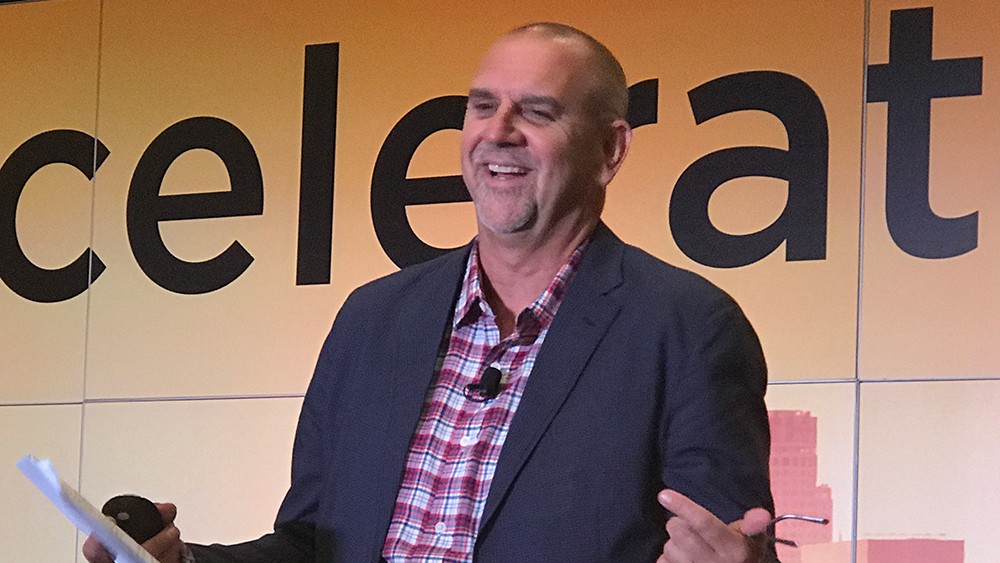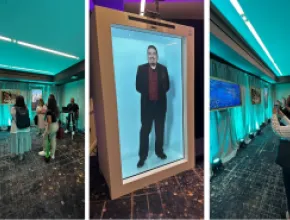Podcasting is a simple and often very low-cost strategy to create engagement with clients, potential clients, members of professional associations and others who may be interested in learning more about your organization, meeting or event.
The growth in popularity of podcasts is undeniable. One-quarter of Americans listen to podcasts weekly, and nearly four times more people listen to podcasts every week than watched the Game of Thrones season premiere, according to Edison Research.
Podcast advertising revenue topped $479 million in 2018 and is expected to exceed $1 billion by 2021, according to research from IAB/PWC.
“It’s the most intimate form of media. Since people typically use earphones it’s like you’re whispering in their ears,” said Mike McAllen, a veteran meetings and association industry podcaster and director of Podcasting4Associations.com.
“It’s a great new way to entertain, engage and educate your target audience, and also create new revenue streams,” he added. “There’s a very low-cost barrier of entry for podcasting, with a lot of free software to produce podcasts and good microphones often costing less than $50.”
McAllen created a lengthy list of resources, such as the cost for equipment and software, for those interested in starting a podcast. Always check reviews before purchasing equipment.
What Is a Podcast?
McAllen provided the following description of what a podcast is:
Podcasting is a service that allows internet users to pull audio files (typically MP3s) from a podcasting website to listen to on their computer, smartphone or other personal digital audio player. This is done by RSS (Real Simple Syndication) or subscription. The term "podcasting" comes from a combination of the words iPod (a digital audio player) and broadcasting.
How to Create a Podcast
Before launching a podcast, budding broadcasters should consider the following:
- Assess the need or desire for a new content vehicle for association/organization members or customers.
- Review the current podcast market in your industry via iTunes or other service, and determine why or if you should join it.
- Demonstrate the projected ROI for producing a monthly podcast series, including reach and revenue with possible sponsorships.
There is a wide variety of ways to research, listen to and distribute podcasts, including:
- iTunes/Apple Podcasts (Apple Devices)
- Google Play/Google Podcasts (Android Devices)
- Pocket Casts
- Spotify
- Stitcher
- SoundCloud
- TuneIn
- Overcast
- Himalaya
A very simple way to create a podcast at conferences is to arrange through the audiovisual provider to plug a digital recorder into the soundboard during presentations, and then offer the recording as part of a podcast series from the event.
Another conference podcast option is to offer an exhibit hall stage or a recording booth at the show where attendees and/or sponsors can record podcast episodes. This option could also be an opportunity to sell branding sponsorships and include a live audience.
Key Considerations When Developing a Podcast
There are a number of important details to consider when developing, recording and distributing a podcast for your business, organization, meeting or event:
- A podcast needs to sound great. Make sure you have high-quality, clean sound files.
- Find a quiet place, if possible. Environments such as tradeshows or conferences can provide a lot of audio distractions that can find their way onto your recording, such as attendee conversations, public address system announcements and music.
- Also be aware of other less obvious sources of background noise from show-floor equipment, such as maintenance equipment, and coffee/espresso machines.
- Work with an AV company, if possible, and reach out to them before the event to secure a key point of onsite contact and see if you can plug into their soundboard, if necessary.
- Find out what resonates to your audience and focus in on it. Storytelling, industry news and event-based recordings are all viable options.
- Before launching your podcast, develop a list of 20 people you want to interview, along with 20 topics. Make sure to discuss the topic you will cover with them before you hit the “record” button, and also make sure to research the topic thoroughly in advance.
- Get your listeners involved: Mention subscribers or supporters of your podcast during the broadcast if relevant. Be careful about sharing sensitive or personal information.
- Respect your listeners’ time by getting to the point and delivering what you promise in the promotional/descriptive copy associated with the podcast.
- Obtain editing software and do a thorough edit of the podcast before broadcasting. Consider adding interesting elements such as non-copyright-restricted music.
- Consider setting up your podcasts into seasons, and/or batch them according to the topics they cover so that your audience can find what is most relevant.
- Develop a regular schedule for releasing your podcast, such as weekly, bi-weekly or monthly. Subscribers will anticipate the day that the podcast will become available and look forward to it. You can also consider releasing shorter, bonus podcast episodes.
- Consider recording and adding “calls to action” during each podcast episode and rotate them through your shows, such as calls to subscribe (very important), the opportunity to buy a product or referencing where listeners can discover sponsor information.
- Interview other podcasters in your space, as they may reciprocate by inviting you on their podcast, which will drive interest.
- Sponsors can be mentioned in a pre-roll or end-roll, with a mid-roll sponsorship message typically generating the most revenue.
- You can also sell interview opportunities to sponsors, but continually reinforce that the podcast cannot be a “sales pitch,” which will immediately turn off your audience and damage your brand. People prefer podcast conversations that are authentic.
- Taking the time to transcribe each podcast will help generate search engine optimization (SEO) benefits, especially if hosting the podcast on your own website. While it can take a lot of labor, it may be worth the time investment to create more visibility.
While podcasting popularity is growing exponentially by way of increased listener traffic and more opportunities for revenue generation, it is still a developing landscape, so take some risks and make sure to analyze what works and what doesn’t, and then make adjustments.
“This is the Wild West of podcasting,” McAllen said, especially in the world of event marketing. “So find what resonates with your audience, jump in and start swimming.”
How Meetings Today Launched Its Podcast
At the time of publication, Meetings Today was approaching the milestone of offering 100 podcast episodes on its Meetings Today Podcast page.
We offered our first podcast episode, in partnership with Mike McAllen, about three years ago, but really didn’t ramp up our own branded effort until August 2018, when we began producing podcast episodes with a vengeance, including recording episodes at industry events.
As a business-to-business publishing company, we find that podcasts are often a fast solution to tap expert sources about breaking news or other topics that are of immediate relevance to our audience of meeting and event planners and other hospitality professionals.
[Related Content: 10 Tips for Keeping Up With the Latest Event Tech]
We often either offer a transcription of the podcast episode or write a companion story about the topic with the goal of using both platforms to cross-pollinate traffic between each.
In fact, we have a podcast episode that is directly related to this article:
We began the podcasting process by building a dedicated podcast page on the Meetings Today website, which was connected to an RSS feed. We also applied for syndication from iTunes, Google Play and Pocket Casts, among other podcast directories, so our audience could subscribe on their preferred platform and be notified of the availability of new episodes.
We later found that using the Anchor podcast platform provided an easy-to-use, no-cost solution to publishing and distributing our podcast content.
Since launching the Meetings Today Podcast, we’ve also branched out into providing brief weekly updates about our recently published content via live broadcasts on Twitter. These are recorded and shared on the Periscope app, and then we use the recorded version of the live broadcast to create a podcast episode that is stored on our podcast page.
[Related Content: How to Get Event Attendees to Download Your Conference App]
All of the podcast episodes we produce are promoted via our social media channels (Twitter, Facebook and LinkedIn) and our newsletters, which are published multiples times per week.
They are also highlighted on a dedicated section of our homepage.
Creating and producing the Meetings Today Podcast has proved to be a fast, low-to-no-cost channel to provide our audience with information about topical issues.
Start Your Podcast and Share It!
We encourage meeting and event professionals to consider podcasting, and if you already do this, share your podcast in the comments section below!
[Read This Next: 4 Tips to Measure Social Media Analytics for Your Next Event]







